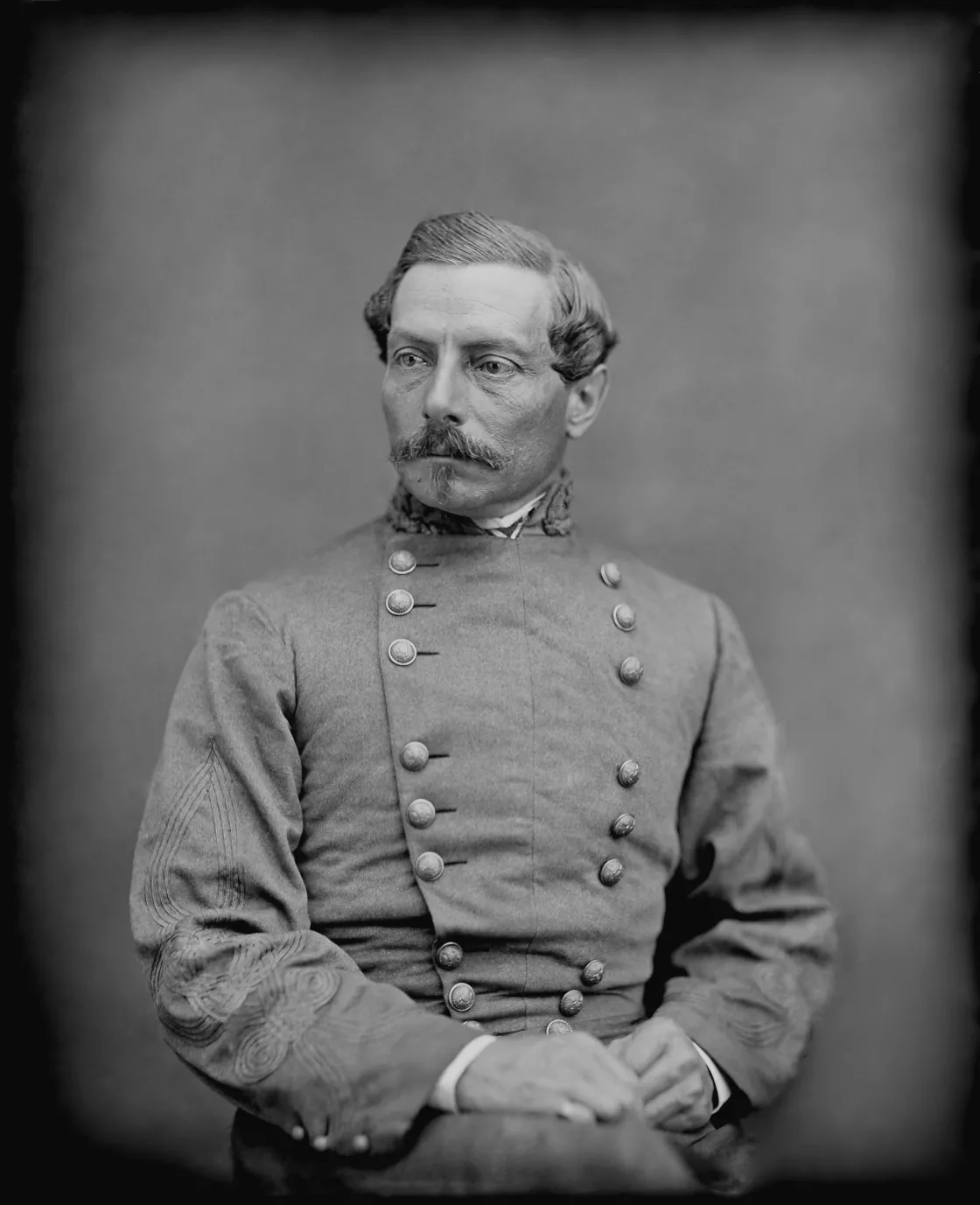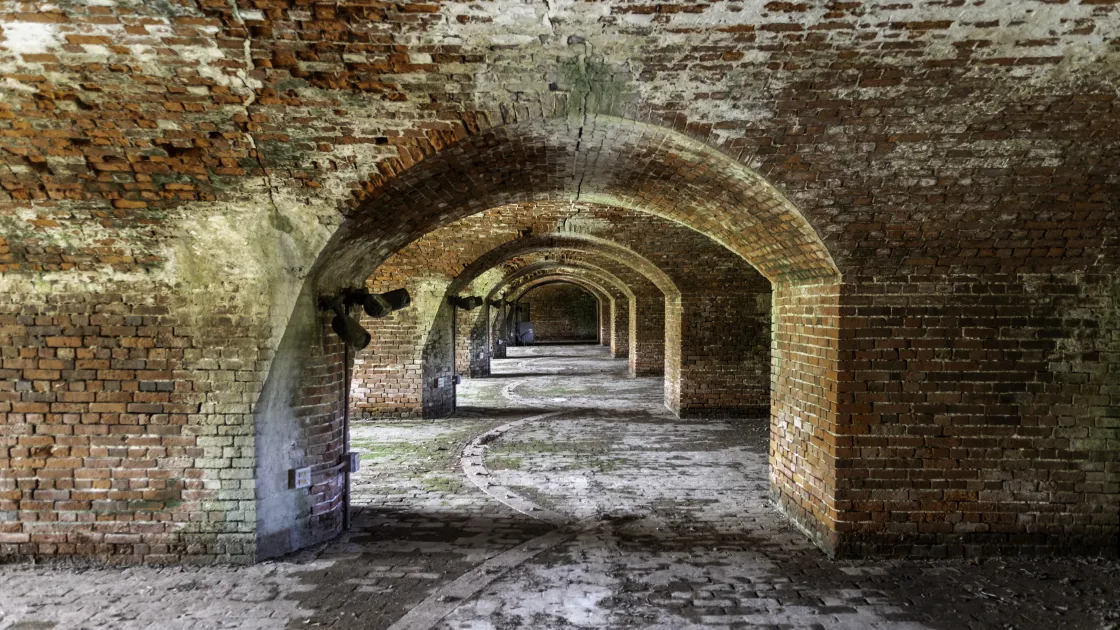
Birds' eye view of New Orleans drawn by J. Bachman circa 1851.
Fact #1: New Orleans was the largest and one of the most prosperous cities in the South at the time of the war.
As the commercial hub of the Deep South, New Orleans endured dramatic growth in the antebellum period. By 1850, the city reached a population of nearly 169,000—making it the sixth-largest city in the United States. New Orleans owed much of its wealth and prosperity to the slave trade, which fostered about 50 slave markets and the passage of about 750,000 slaves at its peak. More than half of all the cotton grown in the United States passed through New Orleans, too. The city’s robust population and wealth provided thousands of troops and supplies to the Confederate cause, making it a tantalizing target for the Union army and navy.
Fact #2: A New Orleans citizen faced execution for tearing down the American flag from the U.S. Mint.
In January 1861, the fledgling Confederate government took control of the New Orleans Mint. The mint began producing Confederate currency, particularly half-dollars. However, a shortage in the gold bullion compelled the mint to close operations on April 1, 1861, after which the facility quartered Confederate troops occupying New Orleans. The mint, along with other Confederate property, was captured by Union forces in 1862. When U.S. marines under the command of Captain David Farragut hoisted the Stars and Stripes over the mint, resident William Bruce Mumford defiantly tore it down. After Mumford shredded the banner and wore pieces in his pockets to prove his Confederate loyalty, Union Major Benjamin Butler ordered Mumford’s execution. Butler ensured appropriate retribution, ordering that Mumford be hanged from a flagstaff protruding horizontally from the mint.
Fact #3: Famed Confederate general P.G.T. Beauregard hailed from New Orleans.
Born on a sugar cane plantation outside of New Orleans, Pierre Gustave Toutant Beauregard grew up in a Louisiana Creole family. He learned French as his first language and practiced Roman Catholicism, both per the Creole tradition. However, he began to learn English after attending a private school in New York. Afterward, he attended the United States Military Academy at West Point and served under General Winfield Scott in the Mexican-American War. When the Civil War broke out, the country recognized Beauregard as one of the premier Southern officers. He helped to strengthen the Confederate defenses around New Orleans and became the first general officer in the Confederate army. General Beauregard served from Fort Sumter to the final surrender of General Joseph E. Johnston at Durham Station in 1865.

Fact #4: Citizens of New Orleans nicknamed Union Major General Benjamin Butler the “Beast” during his time as military governor of the city.
After the capture of New Orleans by Federal forces, the residents of the city resisted the subsequent Union occupation. The Federal commander, Major General Benjamin Butler, quickly garnered a fierce reputation among the Southerners. He imposed martial law over the city, demanded oaths of allegiance, confiscated weapons, and jailed any citizens who defied Federal authority. Butler’s orders provoked protest and outrage in both North and South—as well as in France and England. For his infamy, Confederate sympathizers nicknamed him “The Beast” or “Spoons Butler" for the silverware looted by some Union troops, though no evidence shows Butler's involvement in such thievery.
Fact #5: Because New Orleans was captured early in the war, the city was spared the destruction that befell other Southern cities like Richmond and Charleston.
Because the battle for New Orleans took place along the Mississippi River at Forts Jackson and St. Philip—about seventy-five miles downstream—the city itself evaded significant destruction. While other Southern ports like Charleston endured prolonged fighting and significant damage, the capture of New Orleans early in 1862 and its occupation by Union forces for the rest of the war spared the citizens from such devastation.
Fact #6: New Orleans remained in Confederate hands for only 455 days before being captured.
On April 18, 1862, Captain David Farragut ordered the Union fleet to open fire on Forts Jackson and St. Philip. Six days after a heavy bombardment, the fleet broke the forts’ defenses and advanced on the Confederate positions. All Union ships except the mortar vessels forced their way by and steamed upriver past the final Confederate fortifications. At noon on April 25, Farragut anchored his vessels in front of New Orleans. Union ships continued to decimate Fort Jackson and Fort St. Philip, which remained isolated from the city and any reinforcements. They eventually surrendered on April 28. Federal infantry entered New Orleans just 455 days after Louisiana seceded.

Fact #7: The Confederate mayor of New Orleans refused to surrender the city.
New Orleans was left vulnerable after the Union Navy broke through Fort Jackson and Fort St. Philip. The citizens and civil authorities remained defiant of the Union occupiers, with no Confederate forces left to defend the city. When Captain David Farragut sent a Union officer to accept the surrender, Mayor John T. Monroe refused. Armed mobs swarmed the city as Union marines arrived at city hall to remove the Louisiana state flag. Not until Secretary of State William Seward declared New Orleans “recovered” from the rebellion did tensions begin to simmer.
Fact #8: The Confederates defended the approach to New Orleans by stretching a chain, or boom, across the Mississippi River.
Two brick fortifications, Fort Jackson and Fort St. Philip, ominously guarded the approach to New Orleans on either side of the river. The forts boasted heavy rifled and smoothbore cannons that looked out across the river and its surrounding land. But a defensive boom made from chains and old ships stretched across the river between both forts to prevent passage of the enemy fleet. As a Union vessel struggled to break the chain, Confederate forces in the two forts could concentrate a destructive fire upon the ship. The chain proved a challenging obstacle to the Union Navy. Farragut ordered several gunboats to travel up the river under the cover of darkness and destroy the barrier, but the ships quickly fell into the trap. However, on April 23, the Union gunboats Pinola and Itasca finally opened a gap in the chain. With the way to New Orleans open, Farragut's ships engaged the enemy fortifications and ironclads in close combat and forced past the final Confederate fortifications.
Fact #9: Large numbers of former slaves from New Orleans organized to fight for the Union.
In April 1861, a group of property-owning free Blacks gathered in New Orleans to form a Confederate regiment called the “Native Guards.” These “gens de couleur libres,” as the locals knew them, organized several companies and paraded down Canal Street. However, the Confederacy only issued weapons to the 1st Louisiana Native Guard when the fall of New Orleans seemed imminent. During the Federal occupation, Major General Benjamin Butler reorganized the Native Guard as a Union regiment. Not all original members returned to the unit, but Butler also recruited freedmen liberated from nearby plantations. He organized them into five regiments known as the “Corps d’Afrique,” led by Brigadier General Daniel Ullman. In the last years of the war, the unit received recruits from the newly organized United States Colored Troops.
Fact #10: General Benjamin Butler’s Federal occupation improved New Orleans’ infrastructure.
General Benjamin Butler set out to revive the city as Federal troops secured New Orleans. In addition to punishing Confederate sympathizers, he employed local citizens to support the Union military and to clean up the city. One of these projects included expanding the existing city sewer system to empty sewage into the river. These measures helped significantly reduce the annual yellow fever strike each summer. Though Butler’s policies attracted sharp criticism in New Orleans, his efforts perhaps saved the city thousands of lives.





